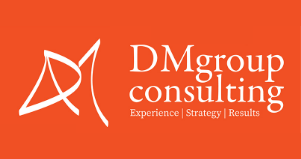April signals the end of the first quarter of the year and the beginning of serious fundraising. We’re headed back to the big fundraising luncheons, fashion shows and galas. And let’s not forget the golf tournaments and clay shoots.
It’s also the time to meet your donors and make your ask. This is assuming that you’ve followed the steps I’ve talked about in earlier newsletters and About Fundraising, my weekly webinar:
· Research
· Identification
· Cultivation
You know who your major donors are, why they support your organization, when they usually give, what you are going to ask for, and where you will make the ask.
Who is the best person to make the ask? Is it your Executive Director, the board chair, or you? Regardless of who makes the ask, there should always be another person with them. The second person serves a couple of roles. One, simply moral support, especially if the person making the ask is a bit nervous. Two, is to observe and take note, maybe not actually write things down during the meeting, but noticing and remembering things said and body language.
Observation is important. Assuming you are in the donor’s home or office, you will want to notice what’s in the room. Are there family photos? This is an indicator that family is important. Are there books and artwork? Is the setting formal or more casual? All of this is information that can help you better connect with the donor.
An experienced major gift donor understands the process. They know you’re going to ask for their donation. Maybe you’ve prepared them so well that you don’t have to ask. They are ready to give. That’s the best!
During the month of April my weekly zoom webinar, About Fundraising, will look at Solicitation and Stewardship.
Stewardship is what happens after a donor has made their gift to your nonprofit. A stewardship plan is similar to a cultivation plan.It’s an outline of communications and other strategies to keep your donor engaged.
A Stewardship Manager is responsible for designing, implementing a donor relations and stewardship program that appropriately and consistently interacts with and recognizes donors at all levels.
Stewardship also means using donations as the donor intended, updating the donors on the progress and impact of their gifts, and moving the donor back to the cultivation phase for their next major gift.
This is especially important when the gift is restricted to a particular program or campaign. Donors want to know that they are making a difference. It’s unethical to use a restricted gift in any way other than what the donor specified. If this happens, the donor has every right to ask for their donation to be returned.
Join me every Thursday at noon, CST, for About Fundraising and learn more about Solicitation and Stewardship during the month of April.
At DMGroupConsulting, our goal is to help you achieve your goals. Contact us at https://dmgroupconsulting.com/contact/.




